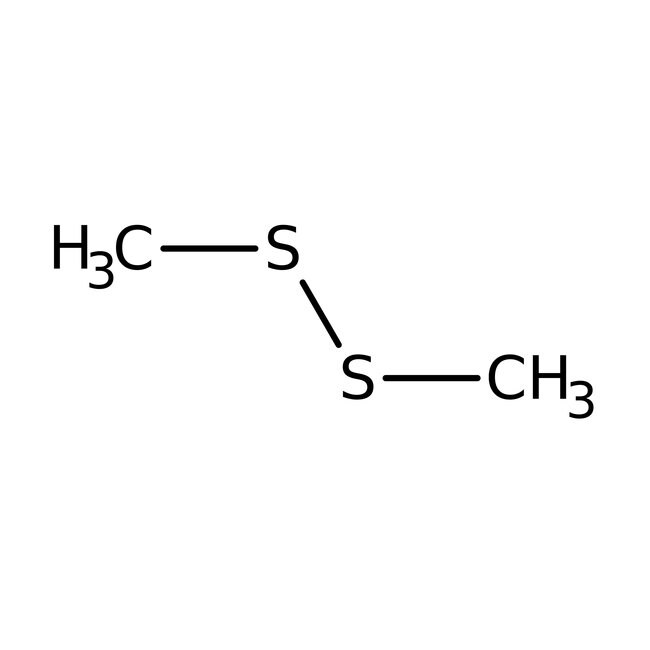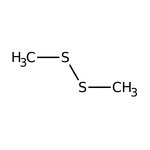Search Thermo Fisher Scientific
Dimethyl disulfide, 99%, Thermo Scientific Chemicals



Dimethyl disulfide, 99%, Thermo Scientific Chemicals
Chemical Identifiers
Specifications
Description
This Thermo Scientific Chemicals brand product was originally part of the Alfa Aesar product portfolio. Some documentation and label information may refer to the legacy brand. The original Alfa Aesar product / item code or SKU reference has not changed as a part of the brand transition to Thermo Scientific Chemicals.
Dimethyl disulfide is used as an intermediate as well as a food additive in onion, garlic, cheese, meats, soups, savory flavors and fruit flavors. It is used in oil refineries as a sulfiding agent. It is used to alfa substitute 2-methylfuran-acrolein to produce food stuff. It is involved in the preparation of 4-(methylthio)phenol. Further, it is used to replace methyl mercaptan as a jet fuel additive. It finds application in artificial flavoring agent and a corrosion inhibitor. In addition to this, it serves as an effective soil fumigant in agriculture.
Solubility
Miscible with ethanol, ethyl ether, alcohol, most organic solvents and oils. Slightly miscible with water.
Notes
Incompatible with strong bases, strong oxidizing agents and strong reducing agents.
Figures
Documents & Downloads
Certificates
Frequently asked questions (FAQs)
Citations & References
Safety and Handling
Classification of the substance or mixture
CLP classification - Regulation(EC) No 1272/2008
Label Elements
Signal Word
Danger
Hazard Statements
H301 + H331 - Toxic if swallowed or if inhaled
H317 - May cause an allergic skin reaction
H319 - Causes serious eye irritation
H336 - May cause drowsiness or dizziness
H370 - Causes damage to organs
H410 - Very toxic to aquatic life with long lasting effects
Physical Hazards
H225 - Highly flammable liquid and vapor
Precautionary Statements
P210 - Keep away from heat, hot surfaces, sparks, open flames and other ignition sources. No smoking
P280 - Wear protective gloves/protective clothing/eye protection/face protection
P301 + P330 + P331 - IF SWALLOWED: rinse mouth. Do NOT induce vomiting
P304 + P340 - IF INHALED: Remove person to fresh air and keep comfortable for breathing
P305 + P351 + P338 - IF IN EYES: Rinse cautiously with water for several minutes. Remove contact lenses, if present and easy to do. Continue rinsing
P311 - Call a POISON CENTER or doctor/physician